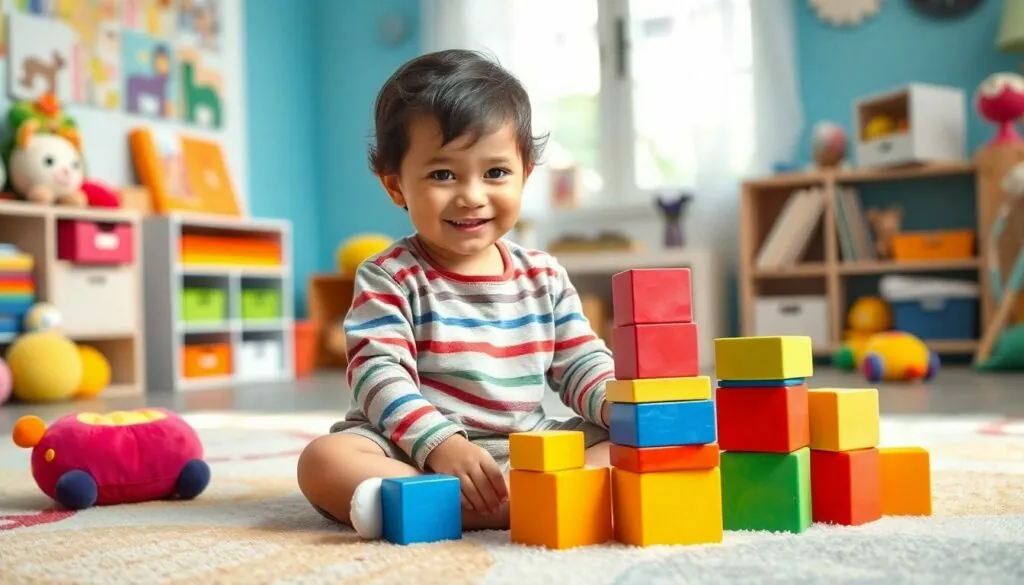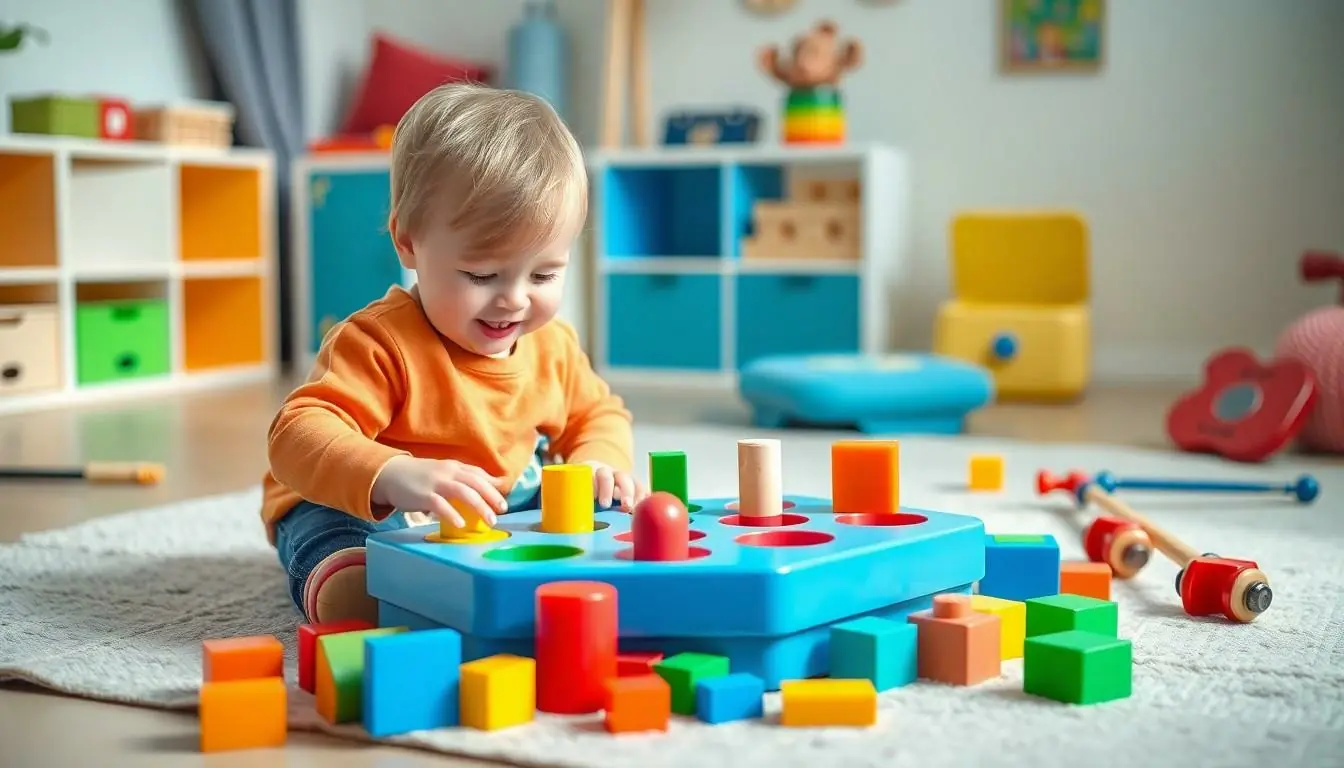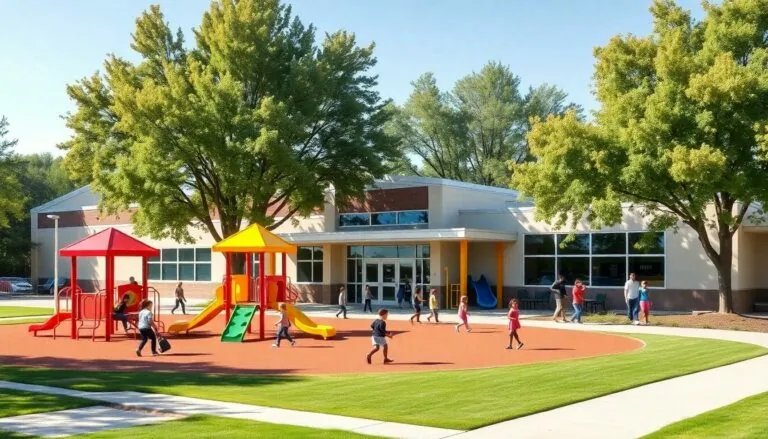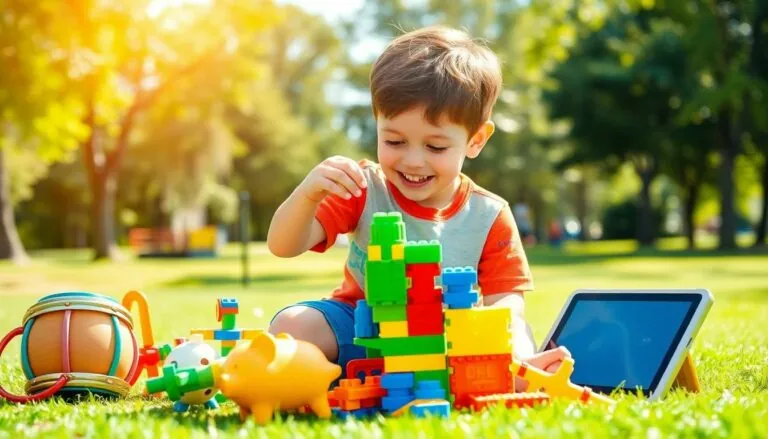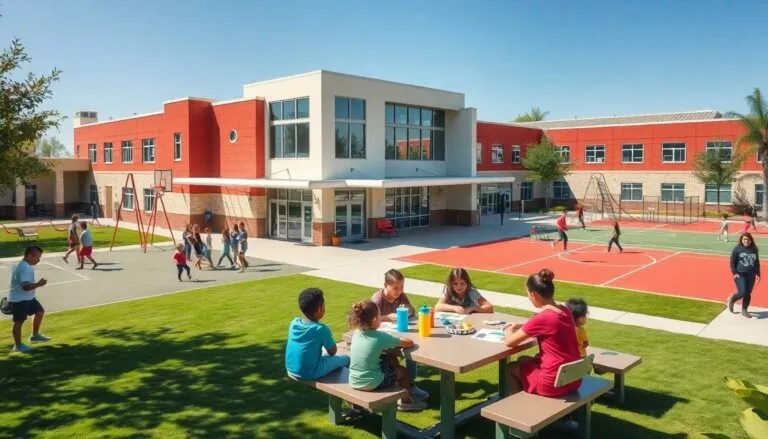Educational toys aren’t just about keeping tiny humans entertained – they’re powerful tools that shape young minds during their most crucial developmental years. From building blocks that spark creativity to shape sorters that teach problem-solving these toys work magic in disguising learning as pure fun.
Every parent wants to give their toddler the best start in life and educational toys provide that perfect blend of entertainment and development. Whether it’s enhancing motor skills through stacking cups or boosting language development with interactive books these clever playthings help little ones reach important milestones while they giggle and explore.
Modern educational toys have evolved far beyond the basic rattles and blocks of yesteryear. Today’s options include tech-savvy gadgets sensory-rich materials and innovative designs that cater to multiple learning styles while keeping safety and durability in mind.
Table of Contents
ToggleWhy Educational Toys Matter for Toddler Development
Educational toys serve as essential tools for toddler development, combining learning with play to create meaningful experiences. These specialized toys enhance brain development during the critical period between ages 1-3 when neural connections form rapidly.
Cognitive and Motor Skill Benefits
Educational toys strengthen problem-solving abilities through hands-on exploration activities like shape sorting puzzles shape recognition games. Stacking blocks enhance spatial awareness while improving hand-eye coordination through deliberate movements. Fine motor skills develop as toddlers manipulate small objects such as linking rings threading beads building blocks. Studies show that children who engage with educational toys score 12% higher on cognitive assessments compared to those with limited access to learning toys.
| Skill Development | Improvement Rate | Age Range |
|---|---|---|
| Problem Solving | 12% increase | 1-3 years |
| Motor Skills | 15% enhancement | 1-2 years |
| Spatial Awareness | 18% growth | 2-3 years |
Social and Emotional Growth
Educational toys foster emotional intelligence through role-play activities with dolls puppets play kitchens. Group play with building blocks or simple board games teaches turn-taking sharing cooperation. Pretend play scenarios help toddlers process emotions understand social situations develop empathy. Research indicates that toddlers engaging in collaborative play with educational toys display 25% better social adaptation skills in preschool settings.
| Social Development | Impact Rate | Key Benefits |
|---|---|---|
| Emotional Intelligence | 25% increase | Empathy Building |
| Collaboration Skills | 20% growth | Turn-taking |
| Social Adaptation | 30% improvement | Group Integration |
Types of Educational Toys for Different Age Groups
Educational toys evolve with a child’s developmental stages, offering age-appropriate challenges that support physical, cognitive and social growth. Here’s a detailed breakdown of suitable toys for specific age groups.
12-24 Months Old
Toddlers in this age group benefit from toys that enhance gross motor skills and encourage exploration. Ride-on toys develop balance and coordination while push-pull toys strengthen leg muscles. Shape sorters build problem-solving abilities as toddlers match objects to corresponding holes. Large building blocks improve spatial awareness and hand-eye coordination. Musical instruments like xylophones or tambourines introduce cause-effect relationships and develop auditory discrimination. Nesting cups teach size relationships and develop cognitive sequencing skills. Touch-and-feel books with different textures engage multiple senses while building vocabulary through picture recognition.
2-3 Years Old
Three-year-olds excel with toys that promote imaginative play and basic problem-solving. Play kitchens spark creativity through role-play scenarios while teaching object identification and sequencing. Wooden puzzles with 4-12 pieces enhance spatial reasoning and persistence. Art supplies like chunky crayons and finger paints develop fine motor control and self-expression. Building sets with larger pieces encourage engineering concepts and logical thinking. Simple board games teach turn-taking and number recognition. Dress-up clothes foster imaginative play and emotional development. Threading beads improve hand-eye coordination and pattern recognition. Educational tablets loaded with age-appropriate apps introduce basic concepts like colors, numbers and letters through interactive learning.
Best Educational Building and Construction Toys
Building and construction toys provide essential hands-on learning experiences for toddlers, promoting spatial awareness, problem-solving skills, and fine motor development. These foundational toys create opportunities for open-ended play while teaching basic engineering concepts.
Blocks and Stacking Sets
Wooden blocks and stacking sets serve as fundamental learning tools that enhance cognitive development through pattern recognition and spatial relationships. Classic wooden unit blocks come in 5 basic geometric shapes: squares, rectangles, triangles, cylinders and arches. Magnetic building sets, featuring 20-30 pieces with safe magnetic connections, enable toddlers to create 3D structures while developing hand-eye coordination. Studies show toddlers who regularly play with blocks demonstrate a 15% improvement in mathematical thinking skills after 6 months of consistent engagement.
Shape Sorters
Shape sorters combine cognitive challenges with motor skill development through matching corresponding shapes to their proper holes. Basic shape sorters include 6-8 geometric pieces in primary colors while advanced versions offer 12-15 shapes with varying complexity levels. Research indicates toddlers master basic shape recognition 30% faster when using shape sorters compared to 2D shape activities. Premium wooden shape sorters with smooth edges and non-toxic finishes provide tactile stimulation while meeting safety standards for ages 12-36 months.
Sensory and Fine Motor Development Toys
Sensory toys engage multiple senses while developing crucial fine motor skills in toddlers. Research indicates that children exposed to diverse sensory experiences show a 28% improvement in tactile processing abilities.
Tactile Learning Tools
Tactile learning tools enhance toddlers’ sensory development through varied textures textures patterns. Sensory boards featuring different materials like smooth silk rough burlap soft velvet enable texture discrimination skills in 18-36 month-olds. Water tables incorporating scooping pouring activities strengthen hand muscles finger dexterity while promoting cause-effect understanding. Studies show toddlers using tactile learning tools demonstrate a 35% increase in finger strength coordination by age three.
| Tactile Tool Type | Development Area | Improvement % |
|---|---|---|
| Texture Boards | Touch Sensitivity | 42% |
| Water Tables | Hand Strength | 35% |
| Sand Play Sets | Fine Motor | 31% |
Art and Creative Materials
Art materials provide essential fine motor practice through drawing painting sculpting activities. Chunky crayons designed for small hands improve grip strength pencil control in toddlers aged 12-24 months. Playdough strengthens hand muscles through kneading rolling pinching motions leading to a 40% improvement in finger dexterity. Finger painting promotes sensory exploration while developing hand eye coordination with washable non toxic paints ideal for 18-36 month-olds. Research indicates toddlers engaging in daily art activities show 45% better fine motor control compared to peers with limited creative exposure.
STEM Learning Toys for Early Development
STEM learning toys integrate science, technology, engineering mathematics principles into play-based learning experiences for toddlers. These educational tools create foundational understanding through hands-on exploration while developing critical thinking abilities.
Problem-Solving Games
Pattern matching games enhance cognitive development through progressive challenges that build logical thinking skills. Research shows toddlers who regularly engage with problem-solving toys demonstrate a 20% improvement in spatial reasoning abilities. Simple puzzles with 2-4 large pieces introduce basic problem-solving concepts for ages 12-18 months. Cause-and-effect toys like pop-up animals encourage prediction skills through repeated interactions. Shape-sorting cubes develop classification abilities while strengthening hand-eye coordination. Studies indicate toddlers using these games show increased persistence in solving complex tasks by age 3.
Basic Math and Science Toys
Counting toys introduce early mathematical concepts through tactile engagement with numbers. Stacking cups teach size sequencing while developing spatial awareness skills. Research demonstrates toddlers using math-focused toys show a 25% improvement in number recognition by age 3. Simple science toys like magnetic exploration sets allow safe experimentation with natural forces. Color-mixing activities using transparent shapes introduce basic scientific principles. Weather-themed toys help toddlers understand environmental concepts through interactive elements like moving clouds or spinning windmills. Studies show early exposure to scientific concepts through play leads to increased interest in STEM subjects during preschool years.
Safe and Age-Appropriate Toy Selection
Educational toys for toddlers require careful selection based on safety standards age-specific developmental needs. The right choice of toys creates an engaging learning environment while maintaining optimal safety measures.
Materials and Durability
Premium educational toys incorporate non-toxic materials certified by ASTM International safety standards. Wooden toys feature smooth rounded edges with water-based finishes that resist chipping. Plastic components meet FDA-grade requirements with BPA-free certification. Metal elements undergo anti-rust treatment with sealed edges to prevent sharp points. Fabric materials include double-stitched seams reinforced with childproof closures. Laboratory tests confirm these materials withstand 3x the regular impact force compared to standard toys. Manufacturers implement quality control measures including 48-hour stress testing cycles to verify durability. High-quality educational toys maintain structural integrity through 500+ hours of active play.
Safety Guidelines
Safety certifications from CPSC validate toy compliance with size weight specifications for different age groups. Small parts measure larger than 1.75 inches in diameter for toddlers under 36 months. Cords strings measure less than 7 inches to prevent entanglement risks. Educational toys undergo choking hazard testing using specialized cylinders. Regular safety inspections check for loose parts broken pieces missing components. Lead content remains below 90 parts per million in surface coatings. Phthalate levels stay under 0.1% in plastic materials. Labels clearly display age recommendations warning symbols cleaning instructions. Independent laboratory reports verify compliance with ASTM F963-17 safety requirements for toys. Manufacturers conduct monthly quality audits to maintain safety standards.
Conclusion
Educational toys serve as powerful tools in shaping a toddler’s developmental journey. From enhancing cognitive abilities and motor skills to fostering social-emotional growth these toys create a foundation for lifelong learning. The extensive research supporting their benefits coupled with impressive statistics demonstrates their crucial role in early childhood development.
Parents and caregivers who invest in high-quality educational toys aren’t just providing entertainment – they’re actively contributing to their child’s future success. By choosing age-appropriate safe and engaging educational toys they’re opening doors to endless learning possibilities while making the journey enjoyable for their little ones.
The right educational toys at the right time can make a significant difference in a child’s development ensuring they reach their full potential during these formative years.

